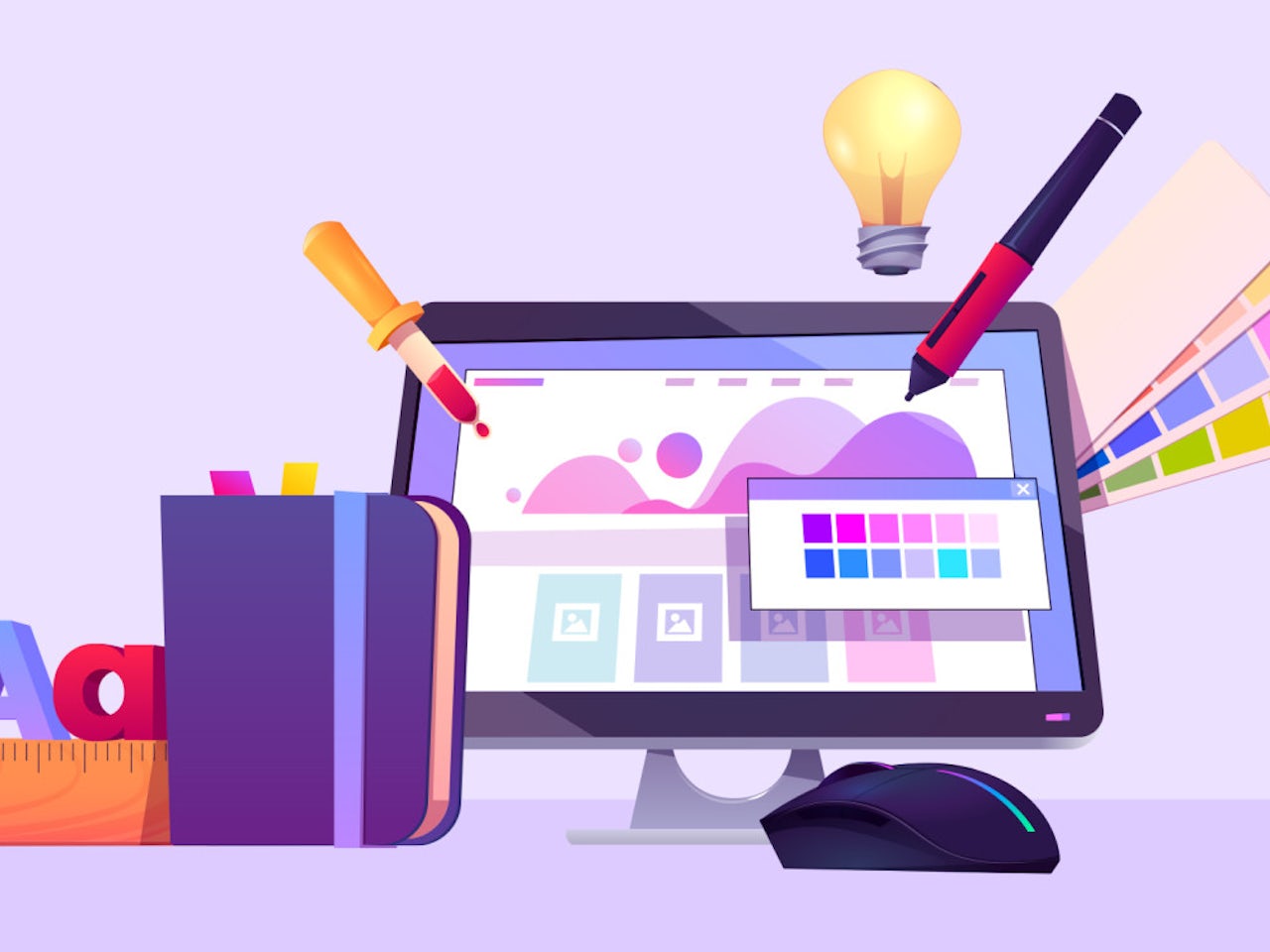Web Design London Ontario Team for Web Expansion
Web Design London Ontario Team for Web Expansion
Blog Article
Just How to Successfully Incorporate Looks and Functionality in Web Design
When creating a website, you need to strike an equilibrium between looks and capability. It's not practically looking good; your style should additionally offer an objective and overview customers properly. By focusing on simplicity and instinctive navigating, you can develop an interesting experience. What elements truly enhance use while maintaining aesthetic appeal? Allow's explore the crucial concepts that can lead to a harmonious mix of elegance and function.
Understanding the Relevance of Visual Appeals and Performance
When you make a web site, comprehending the equilibrium in between aesthetic appeals and capability is vital for creating a reliable user experience. An aesthetically enticing website grabs focus, however it's the capability that keeps users engaged. Site visitors will rapidly shed rate of interest and leave.Consider your target audience and what attracts them in if your website looks wonderful but is difficult to navigate. You wish to develop a design that mirrors your brand while making sure convenience of use. Streamlined designs, user-friendly navigating, and clear contact us to activity can improve both looks and functionality.

Principles of Reliable Web Design
To create an effective internet design, you require to follow numerous essential principles that enhance both user experience and aesthetic appeal. Initially, focus on simplicity; a tidy layout assists users browse easily. Use a constant color plan and typography to keep coherence throughout your site. This promotes knowledge and trust.Next, ensure your layout is responsive. Customers gain access to internet sites on various gadgets, so your layout needs to adjust effortlessly. Pay focus to visual pecking order; emphasize important aspects with color, size, or placement to lead users' focus.Finally, integrate ample white area. It protects against mess and makes content a lot more absorbable. Remember, efficient web style equilibriums looks and functionality, so every style selection should serve a purpose. By complying with these concepts, you'll produce a site that's not only visually attractive however likewise straightforward, ultimately keeping visitors engaged and encouraging them to return.
Prioritizing Individual Experience
When prioritizing user experience, you'll want to start by understanding what your customers really need. Simplifying navigating layout can make a substantial distinction in just how conveniently they locate what they're looking for. Enhancing aesthetic pecking order assists guide their attention to the most essential elements on your website.
Comprehending User Demands
Understanding customer requirements is vital for creating an interesting internet experience that keeps site visitors coming back. To accomplish this, you should determine the objectives and choices of your target market. Begin by performing customer study, like studies or interviews, to gather understandings on what individuals worth most. Pay interest to their discomfort points and difficulties when interacting with comparable sites. This info allows you to tailor your layout, guaranteeing performance aligns with customer assumptions. Additionally, take into consideration creating individual characters that represent different sections of your target market, assisting you envision their needs during the style process. When you focus on recognizing individual requirements, you develop a website that not only looks excellent yet also supplies a seamless, satisfying experience that cultivates commitment.
Streamlining Navigation Design

Enhancing Visual Pecking Order
A strong aesthetic power structure is necessary in assisting customers via your web site and ensuring they engage with vital material. To accomplish this, make use of spacing, color, and size strategically. Make important components like headings bigger and bolder than body text, attracting focus quickly. Make use of contrasting colors to highlight calls to activity, motivating clicks. Furthermore, employ adequate white area to separate areas, making content digestible and inviting.Consider the circulation of info; arrange components realistically, leading users' eyes from one indicate the next. Usage aesthetic cues, like lines or arrowheads, to direct interest. By prioritizing visual hierarchy, you boost user experience and increase the probability of conversions, ensuring your web site is both cosmetically pleasing and functionally effective.
Color Theory and Its Impact on Use
While selecting the ideal colors for your internet site might feel like a small detail, it considerably affects use and individual experience. Color affects just how individuals regard info and can improve or prevent navigating. For example, contrasting colors can aid crucial elements stick out, making it simpler for site visitors to locate what they need.Additionally, consider the psychology of colors: blue usually inspires depend on, while red develops necessity. Recognizing your target market can guide your color choices, guaranteeing they resonate well.Moreover, consistent color pattern assist develop brand name identification, making your internet site more memorable. However, beware-- as well numerous colors can overwhelm users. Stick to a minimal palette that enhances your web content and keeps clarity.Incorporating ease of access is additionally necessary; confirm your color combinations are pleasant for those with aesthetic disabilities. By thoughtfully using shade theory, you'll enhance usability and produce an extra engaging user experience.
Typography: Harmonizing Design and Readability
Color selections web design london ontario established the stage for your website, but typography plays a just as essential duty in improving user experience. You desire your message to communicate plainly while likewise reflecting your brand name's character. Start by picking fonts that are not just appealing but additionally clear. Sans-serif typefaces usually work well for electronic screens, as they're less complicated to check out at various sizes.Maintain a power structure by utilizing different font dimensions and weights; this guides users with your content easily. Consider line spacing and letter spacing; too limited can annoy viewers, while too loosened can disrupt the circulation. Limit your font selections to two or 3 to keep the style cohesive.Finally, always check your typography across different tools and internet browsers. What looks good on one screen might not on an additional. Balancing design with readability assurances that your message reverberates, keeping your audience notified and involved.
Responsive Layout: Making Looks Work With All Devices
To ensure your internet site looks terrific on any kind of device, you'll require to welcome receptive design principles. This technique assurances your site adapts to various display dimensions, providing a suitable customer experience. Start by utilizing liquid grids and adaptable images that scale perfectly. Instead of dealt with measurements, choose percents and family member units, allowing your layout to change dynamically.Next, carry out media inquiries in your CSS. These allow you use various designs based upon tool features, like screen width. By doing this, you can keep visual appeal while guaranteeing functionality.Don' t ignore touch targets; make sure buttons and links are easy to tap on smaller displays. Focus on important material, so individuals can quickly navigate your site despite their device. By focusing on these components, you'll develop an engaging, visually appealing experience that meets the demands of all customers, whether they get on a desktop computer, mobile phone, or tablet .
Carrying Out Usability Testing for Continual Renovation
To improve your web design, you require to set clear functionality goals that align with customer requirements. By conducting customer tests, you can collect valuable feedback on just how genuine people connect with your site. Evaluating these results will aid you make notified improvements and develop a much more effective customer experience.
Defining Functionality Goals
While visual appeals can attract customers in, defining use goals is necessary for guaranteeing their experience stays seamless and satisfying. Beginning by determining what you want individuals to achieve on your website (website design london Ontario). Consider their habits, jobs, and needs. Are they trying to find details, purchasing, or enrolling in a newsletter? Develop clear benchmarks to measure success, like job conclusion rates or time on task. Prioritize instinctive navigation, easily accessible web content, and responsive style to boost use. Regularly take another look at these goals as customer expectations develop. By specifying use objectives, you produce a structure for reviewing and improving your web site's efficiency. This emphasis on usability not only improves individual complete satisfaction however likewise enhances the total effectiveness of your style
Conducting Customer Tests
Conducting user tests is necessary for improving your website and ensuring it meets your audience's needs. Beginning by recognizing your target customers and developing a test plan that outlines your objectives. Use a mix of qualitative and quantitative approaches, such as studies, meetings, and task-based monitorings, to collect detailed responses. Welcome participants to navigate your website while you observe their interactions and note any difficulties they encounter. Urge open discussion to capture their ideas and sensations regarding the design and functionality. Maintain sessions brief and focused, guaranteeing you cover crucial areas without overwhelming customers. Ultimately, ensure to document all searchings for, as this information will certainly be very useful for making educated style choices that enhance both looks and functionality.
Examining Test Outcomes
How can you efficiently assess the outcomes of your usability examinations to drive continuous improvement? Beginning by categorizing responses into common motifs. Search for patterns in customer actions that highlight pain factors or areas for enhancement. Usage quantitative data, like task conclusion rates and time on job, to determine functionality objectively. Do not fail to remember to consider qualitative insights from customer comments; they frequently disclose underlying issues that numbers can not reveal. Prioritize one of the most impactful findings and produce workable things for your design group. Remember, it's concerning iterating-- carry out adjustments, then test once again. This cycle of screening, evaluating, and refining helps you balance visual appeals and performance, ensuring your site fulfills user requirements effectively while preserving aesthetic appeal.
Often Asked Questions
Just how Do I Pick the Right Color Scheme for My Website?
To select the appropriate shade palette for your web site, consider your brand name's individuality, target audience, and emotional effect (website design london Ontario). Usage shade psychology, develop consistency, and guarantee readability. Examination combinations to see what resonates best with visitors
What Tools Can Aid With Internet Layout Appearances and Functionality?
You can use tools like Adobe XD, Figma, and Map out to improve your website design's visual appeals and performance. These systems provide user-friendly interfaces, cooperation functions, and pre-made design templates to improve your creative process and improve your designs.
How Can I Include Animations Without Jeopardizing Performance?
To incorporate animations without compromising capability, prioritize refined results that boost individual experience. Usage CSS computer animations for smoother communications, assurance quick lots times, and test on numerous gadgets to preserve performance while including visual appeal.
What Are Typical Errors to Stay Clear Of in Website Design Appearances?
When designing, stay clear of messy layouts, inadequate shade selections, and irregular fonts. Do not ignore mobile responsiveness, as it can alienate customers. Verify your design straightens with your brand name, creating a smooth experience that engages site visitors successfully.
How Often Should I Update My Web site's Layout for Optimal Aesthetic Appeals?
You should upgrade your website's layout every 1-2 years to stay on top of trends and keep optimal visual appeals. Regularly restoring visuals aids engage site visitors and guarantees your site continues to be user-friendly and enticing. When you design an internet site, comprehending the equilibrium between aesthetic appeals and functionality is vital for creating a reliable user experience. To produce a reliable web design, you need to stick to numerous key principles that boost both user experience and visual charm. Individuals accessibility websites on different tools, so your design ought to adapt flawlessly. When prioritizing user experience, you'll want to start by comprehending what your users genuinely require. Beginning by performing customer research, like surveys or interviews, to gather insights on what customers worth most.
Report this page